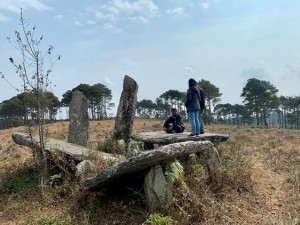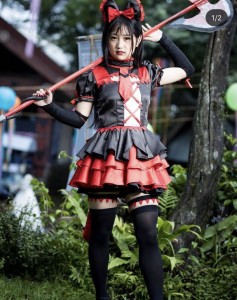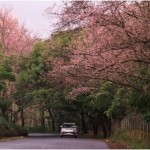It is not just cherry blossoms that Japan and North East India have in common. Even as spring marks the onset of the sakura festival in Japan, in Meghalaya it arrives only in autumn where the hillsides are a-burst with pink. Meghalaya celebrates the flower too: The first Cherry Blossom Festival was held in the state by the government in 2016. In 2018, Shillong hosted India’s first International Cherry Blossom Festival, where then Japanese ambassador Kenji Hiramatsu was the chief guest, and elements of Japanese culture and cuisine, very popular with the locals, were promoted. Hiramatsu said the cherry blossoms form the basis of a special friendship between the people of Japan and North East India.

Despite seven of India’s north-eastern states being contiguous with South East Asia and China, it is in fact Japan and its culture to which the population relates the most. It’s not hard to find the similarities. Japanese influences are apparent in the building designs of Assam and Meghalaya. The love for nature and worship of ancestors runs deep in the Khasis of Meghalaya, Assam and even Bangladesh, and the Shinto cult of Japan. Young North Easterners follow Japanese popular culture, from anime to street-style dressing, movies and food.
There are some reasons for this. The cultural similarities run deep, often traced back to centuries. Noted British ethnographer, Major P.R.T Gurdon who wrote the book The Khasis in 1907 pointed out a few, like the rooster as a symbol of promise. Travellers to the hills of Meghalaya find them scattered with monoliths and ancient commemorative stones. The Khasi custom of offering food and drink at the cenotaphs is similar to the ancient Shinto cult of Japan where ceremonies were performed at the tombs of the deceased. In the rooster, both cultures share an auspicious symbol, and the word for ‘river’; ‘Ka Wah’ in Khasi and ‘Ka Wa’ in Japanese. Similarly, bamboo is sacred to both cultures and used as an element of protection.

The Japanese construction style is visible across the region, but especially clustered in Shillong. The architectural style popularly known as the ‘Assam-type house’ has Japanese roots. After the Great Assam Earthquake of 1897, where many traditional and colonial structures collapsed, the famous Japanese seismologist Fusakichi Omori was invited by the then British government of Assam Meghalaya – then one state – to guide earthquake proof housing. Omori’s guidance informed engineers and architects in creating the ‘Assam-type house’, using timber frames resting on the ground, and wall panels made of indigenous bamboo, the ‘ikra’ reed, and mud, known as the ‘ikra’ type walls. Many of these structures are still standing today in Assam and Meghalaya, mostly serving as government offices and private residences. While not too common, the Japanese aesthetics extended beyond the building to the garden. Shillong’s popular Phan Nonglait Park, formerly Lady Hydari Park, built in 1937 for example, has a Japanese style garden.

The younger generation has taken to Japan and Korea as its northstar, over the past decade or two. With the rise in television and internet, access to popular Japanese movies, anime characters and culture has become easier. There is a sense of ‘they look like us, eat like us’. Nagaland Anime Junkies (NAJ) show just how much they love their manga and anime characters by dressing up like them. The NAJ Cosfest held annually in Nagaland is one of the most popular cosplay festivals in North East India, giving otherwise shy youth a chance to express their creativity and personality.

Photo courtesy: Instagram @nagaland_anime_junkies
The dress-up extends into street style. Rather than looking to mainland India, these youth seek their style inspiration from Japan and Korea. A look at the popular Instagram blogs @shillongstreetstyle or @nagasstreetstyle reflect the comfy, oversized, kawaii (cute) style fashion found on the streets of Tokyo. Much like their fashion counterparts in the east, these youth are experimenting and taking risks in seamlessly blending North East tradition with modern influences. They are blooming just like the cherry blossoms.

Photo courtesy: Instagram | @shillongstreetstyle
Now, with Japan as a major investor in the infrastructure of the North East, (it is investing $1.75 billion for roads, trains and forest regeneration), the interest and familiarity with Japan is growing. All to the good, says the Indian government, as India forges closer ties with its Asian partner.
Priti Rao is Senior Policy Advisor at Dalberg, Co-founder at Northeast Edit, Visiting faculty at IIM Shillong.
This article was exclusively written for Gateway House: Indian Council on Global Relations. You can read more exclusive content here.
For interview requests with the author, or for permission to republish, please contact outreach@gatewayhouse.in.
© Copyright 2021 Gateway House: Indian Council on Global Relations. All rights reserved. Any unauthorized copying or reproduction is strictly prohibited.


